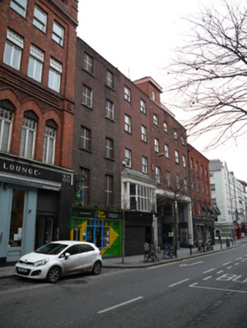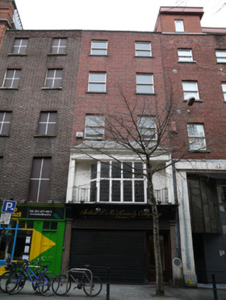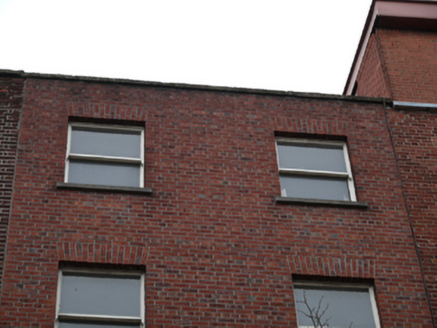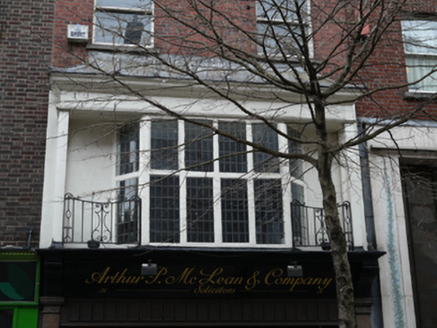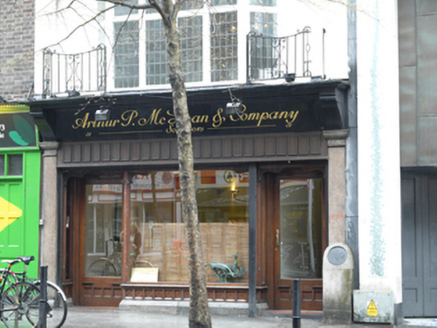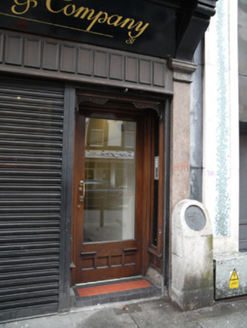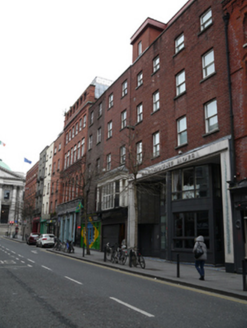Survey Data
Reg No
50020012
Rating
Regional
Categories of Special Interest
Architectural, Artistic, Social
Original Use
House
Historical Use
Shop/retail outlet
In Use As
Office
Date
1820 - 1840
Coordinates
315430, 234085
Date Recorded
28/02/2015
Date Updated
--/--/--
Description
Attached two-bay five-storey former house, built c.1830, having shopfronts to ground and first floors of front (east) elevation. Pitched roof, hipped to front and set perpendicular to street, hidden behind red brick parapet with cut granite coping. Recent red brick walls laid in English garden wall bond to front upper floors. Square-headed window openings having render sills and one-over-one pane timber sliding sash windows. First floor shopfront with canted bay window, sprocketed lead roof, timber pilasters and entablature, timber framed windows having leaded glazing and wrought-iron railings. Marble pilasters and plinth course to ground floor shopfront with carved timber shopfront having panelled fascia, recent fascia and cornice over, flanked by plain brackets. Square-headed window openings having carved timber window frames set over timber panelled stallrisers. Square-headed door opening with carved timber surround and glazed timber door. Situated on west side and centre of Parliament Street.
Appraisal
Parliament Street is the first example of formal axial planning in mid-eighteenth-century Dublin. George Semple designed the rebuilding of Essex Bridge (1753-55) and his plan showed a new wide street linking the bridge to Dublin Castle, this plan for Parliament Street was implemented by the Wide Street Commissioners in 1762. Many of the buildings, including this one, were adapted and rebuilt in the nineteenth century. The proportions of its upper floor openings give a hierarchy to each floor, creating a pleasantly balanced façade. The first floor window is given prominence with the integration of a handsome bay window. The late nineteenth-century ground floor shopfront demonstrates skilled craftsmanship, creating an interesting focal point on the streetscape. The building shares a parapet height with its neighbouring buildings, lending a sense of continuity to the streetscape. Formerly numbered 20 Parliament Street, Thom's Directory of 1862 describes the building as being in use as a confectioners.
